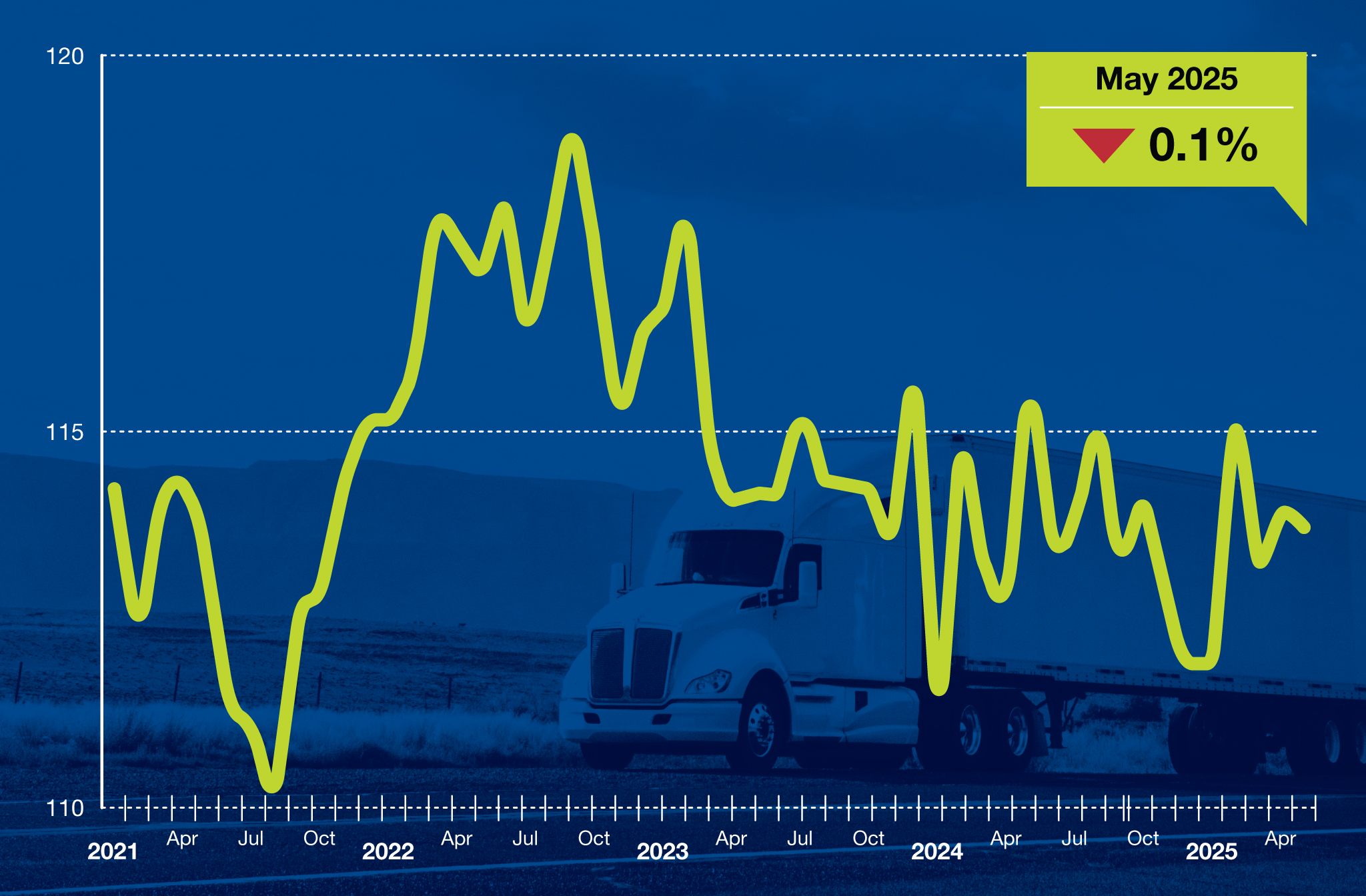Washington — Trucking activity in the United States slipped in May as the freight market remained choppy. Specifically, truck freight tonnage decreased 0.1% after gaining 0.5% in April, according to the American Trucking Associations’ advanced seasonally adjusted For-Hire Truck Tonnage Index.

“The seesaw freight demand pattern continued in May, making it difficult to discern any clear pattern in the market,” said ATA Chief Economist Bob Costello. “Excluding the services economy — the largest part of economic activity— the goods market is all over the map, thus impacting freight levels. Construction is soft, manufacturing is up and down, and consumers are cautious.”
In May, the ATA advanced seasonally adjusted (SA) For-Hire Truck Tonnage Index equaled 113.8, down from 113.9 in April. The index, which is based on 2015 as 100, was down 1.3% from the same month last year, the first year-over-year decrease in 2025. Year-to-date, compared with the same period in 2024, tonnage was up 0.1%.
April’s SA gain was revised higher from the previously reported 0.3% decrease in our May 20 press release.
The not seasonally adjusted index, which calculates raw changes in tonnage hauled, equaled 116.2 in May, 2.9% above April’s reading of 112.9.
Trucking serves as a barometer of the U.S. economy, representing 72.7% of tonnage carried by all modes of domestic freight transportation, including manufactured and retail goods. Trucks hauled 11.27 billion tons of freight in 20241. Motor carriers collected $906 billion, or 76.9% of total revenue earned by all transport modes.
Both indices are dominated by contract freight, as opposed to traditional spot market freight. The tonnage index is calculated on surveys from its membership and has been doing so since the 1970s. This is a preliminary figure and subject to change in the final report issued around the 5th day of each month. The report includes month-to-month and year-over-year results, relevant economic comparisons, and key financial indicators.